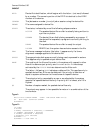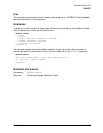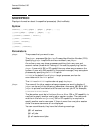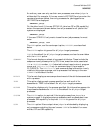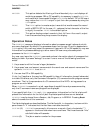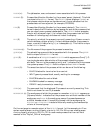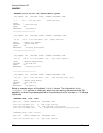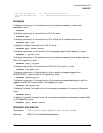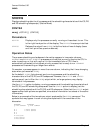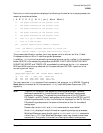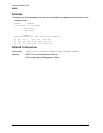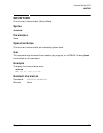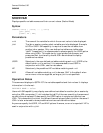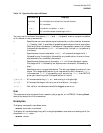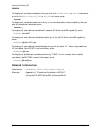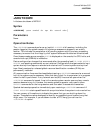
600 Chapter 7
Command Definitions S-SO
SHOWQ
SHOWQ
Displays scheduling data for all processes and the scheduling characteristics of the CS, DS
and ES scheduling subqueue(s). (Native Mode)
SYNTAX
SHOWQ[ ;ACTIVE] [ ;STATUS]
Parameters
ACTIVE Displays only the processes currently running or those about to run. This
is the right-hand portion of the display. The STATUS lines are printed last.
STATUS Reduces the output from SHOWQ to the final status lines of display (base
and limit priorities, quantum bounds).
Operation Notes
The process scheduling and subqueue information appears in two major columns:
DORMANT and RUNNING. RUNNING processes are those that currently require the CPU in
order to continue, or that will require it in the immediate future. CPU time is
automatically allocated to the highest priority process that is ready to run. DORMANT
processes are those waiting on longer-term events.
On occasion, a process appears in more than one column, indicating that it was changing
state when you executed SHOWQ.
As the default, SHOWQ lists dormant and running processes and the scheduling
characteristics of the CS, DS, and ES subqueues. However, the ACTIVE and STATUS
options permit you to filter the SHOWQ output which, on large systems, may display
hundreds of live processes.
Use the ACTIVE option to display running processes and the scheduling characteristics of
the CS, DS, and ES scheduling subqueues. Use the STATUS option to display just the
scheduling characteristics of the CS, DS, and ES subqueues. (Note that the ACTIVE output
appears when both options are specified, since status information is a subset of the active
information.)
Below is an example of the two-column output produced by the SHOWQ command. The
symbols that may appear in such a listing are explained in the remainder of the
discussion.
DORMANT RUNNING
Q PIN JOBNUM Q PIN JOBNUM
A 1 C M163 #S263
B 2 C U215 #S256
B 3
A 4
D U29 #J30
C M37 #S234
C M55 #S248



